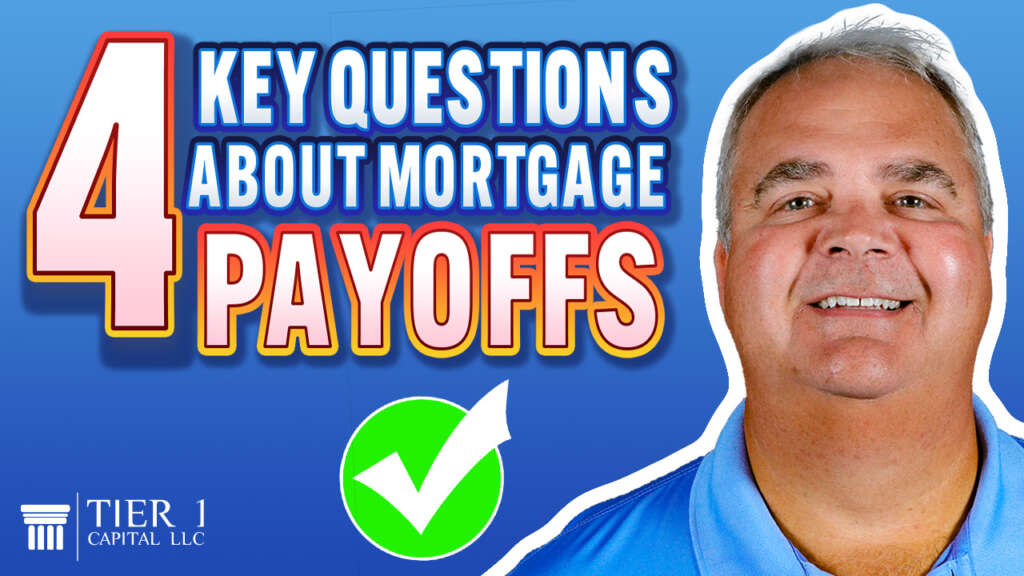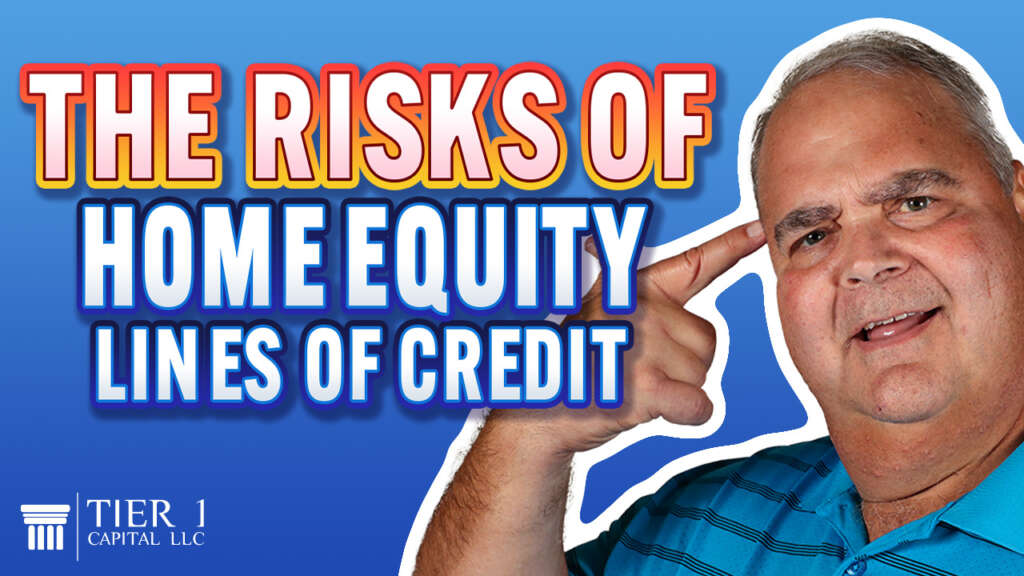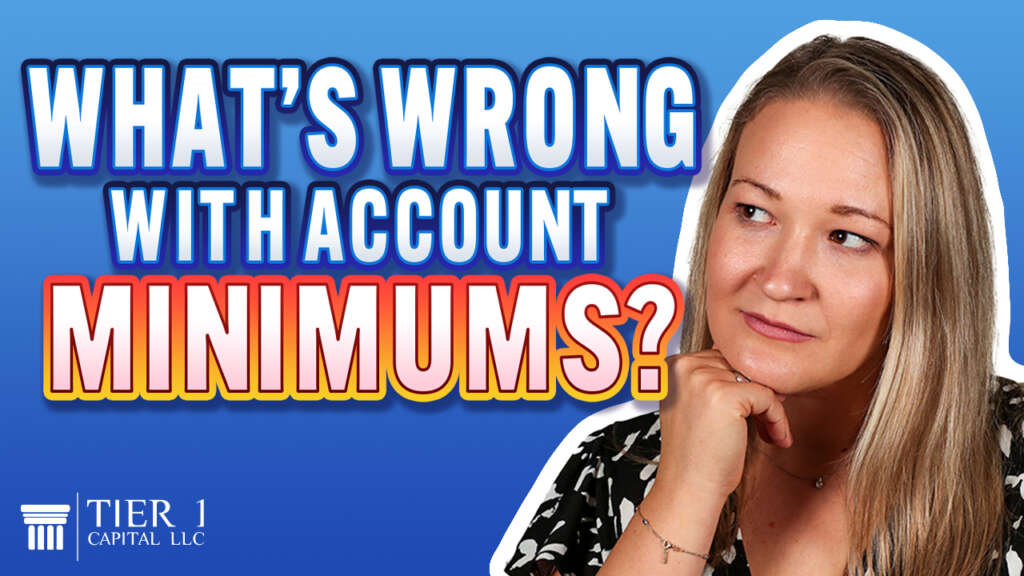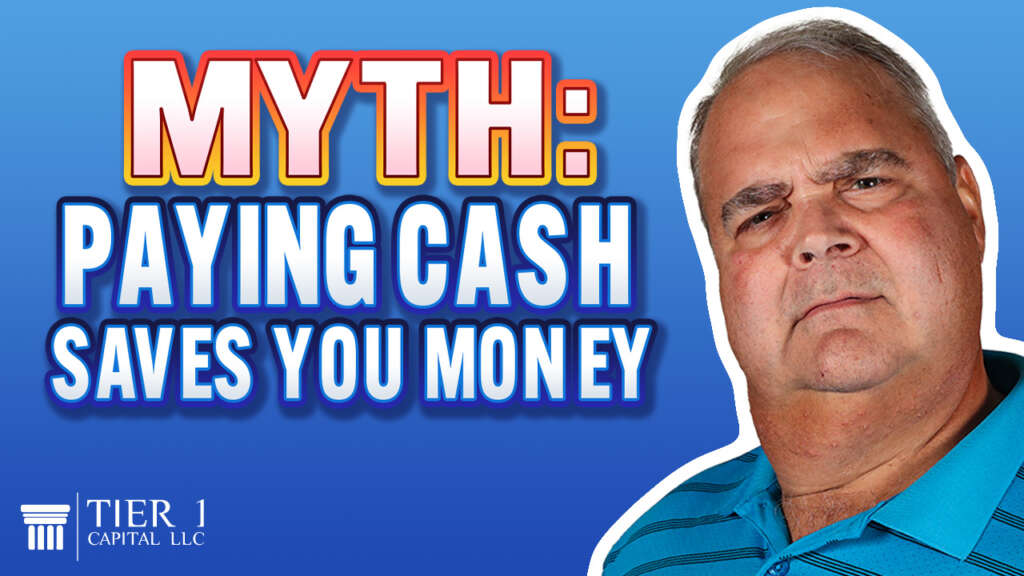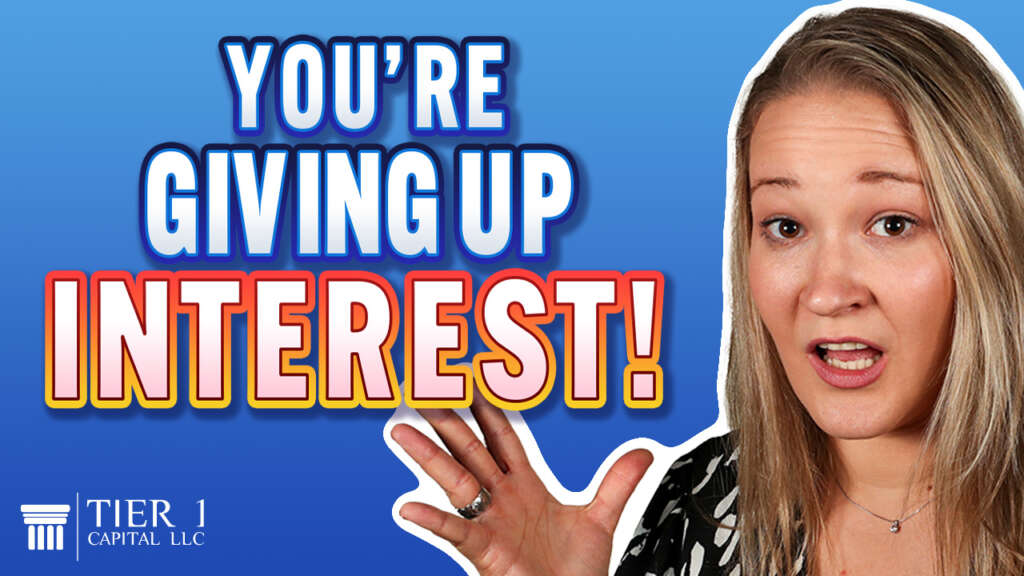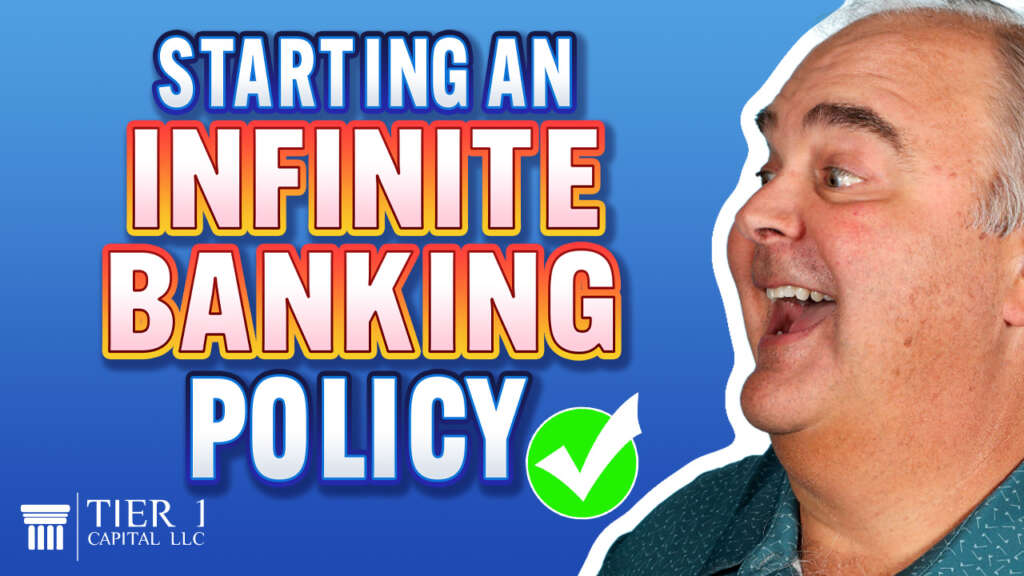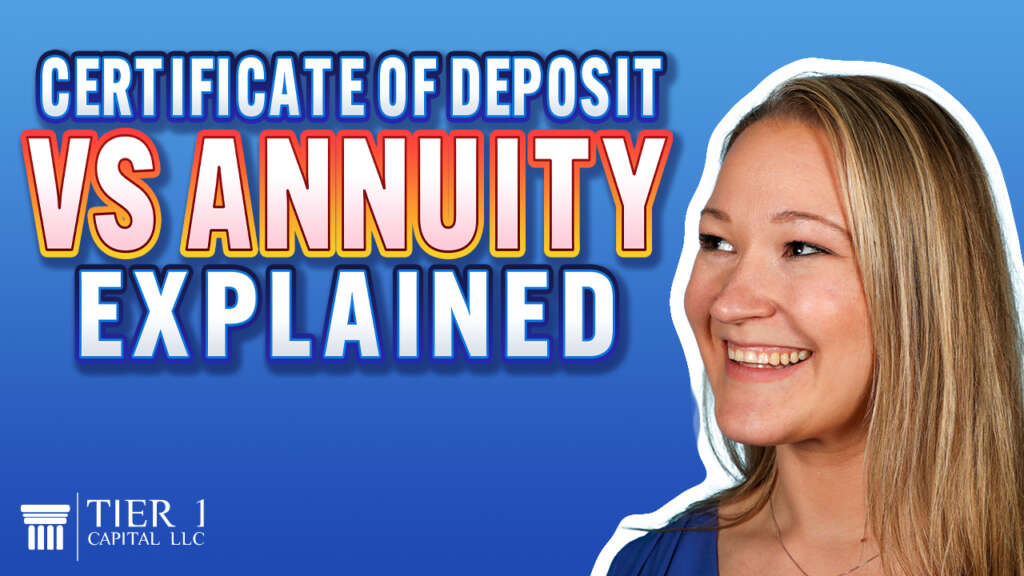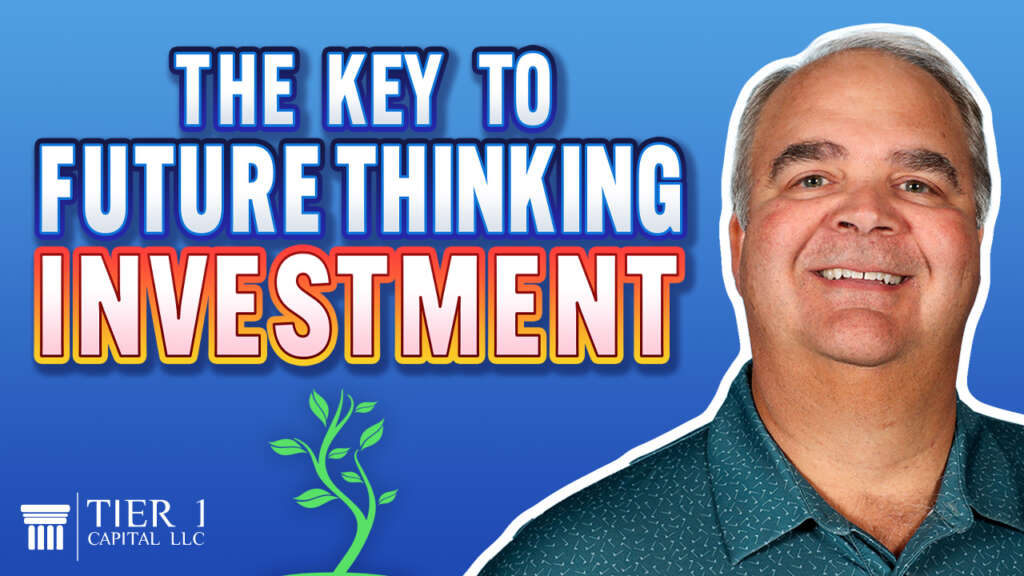In this episode of the Control Your Cash Podcast, host Tim interviews John St. Pierre, author of ‘The 100 Million Journey’ and a coach to entrepreneurs. John shares his unique entrepreneurial journey, starting from his college days running a painting franchise, to building and eventually being fired from a $50 million sports business, which led him to successfully grow another venture to over $100 million. He discusses the significant lessons learned through his failures and successes and emphasizes the importance of self-reflection, strategic planning, and maintaining control of one’s business financials. John also talks about the value of learning from others’ experiences to avoid similar pitfalls and advises on having ‘patient ambition’ for building a business the right way. Additionally, John offers insights into his book and a free workbook with tools and templates for entrepreneurs seeking to navigate their business growth effectively.
Transcript
Tim: Today, it’s our honor to have John St. Pierre, author of The $100M Journey. John is a coach to entrepreneurs. He also has a podcast called Entrepreneurs United, which can be found on all your, favorite podcast channels. John, welcome to the Control Your Cash Podcast.
John: Thanks, Tim. Thanks for having me.
Tim: John, in the pre-call, we talked about your journey. And so let’s start with your entrepreneurial journey, and you had shared with us that you know you were an entrepreneur in college. So tell us about like what you did while you were in college, because that was something that it sort of appealed to me when I was in college. And I never pulled the trigger. So tell us about what you did to make money in college.
John: Yeah, I love that. Well, I didn’t have a choice and you’ll learn why in a second, to become an entrepreneur, but I grew up in Canada, came to the U. S. to go to school and studying accounting. And, in terms of a student coming to the U. S. you really don’t have a work visa. You have a student visa. So my first summer in college, I went back home to Canada and went planting trees. Six hours north of civilization, getting paid 10 cents a tree, wearing all netting for the black flies and not to be able to get you, and spent my summer up in the wilderness. And at the end of that summer, I said, I’m never doing that again. What do I do next year to stay down south? And you know, a little small, little loophole, but you know, you don’t have to be a U. S. resident to own your own limited liability corporation. And so I, basically saw a poster on my dorm room wall, which was own your own College Pro painting franchise. I’m like, what is this? I don’t like painting. I don’t know anything about painting, but I would like to own my own business so I can stay down here. Cause my only other option was to go work for free for some public accounting firms, right. And doing an internship. Right. So. Got that poster, apply for the job. And next thing you know, I’m running my own painting company, uh, in the summertime, hiring all my friends to paint for me, going out and doing sales and estimating, and really got hooked to this like concept of entrepreneurship and, you know, yeah, I’m studying accounting, but I didn’t see myself as an accountant. I saw myself that from that point forward, as an entrepreneur, spent two summers doing that as a college pro painting franchise, and learned a lot about business and had a lot of fun, but a lot of hard work too.
Tim: Well, it always is hard work. And just as an aside, the question, as you were explaining, you know, hiring your friends, tell me how that went when you’re hiring your friends. That you need to depend on them, you know, to paint some house or some, some business. So tell us about a little bit about how that worked out.
John: Yeah, I’m happy you picked up on it. My first summer running my own business was a complete and utter disaster, partly because, I couldn’t count on my crew to show up on time. Why? Because I was partying with them every night. And then the next morning I’m like, guys, let’s go. You got to go, you got to go paint some homes. The most undependable crew, right? The sec…, by the time my second year came around, I learned so much through disastrous, you know, this road as an entrepreneur of ups and downs and challenges. And you’re a new entrepreneur in college trying to figure this all out. I learned a lot of valuable lessons and that was probably one of the biggest ones was don’t hire your friends to work for you. It doesn’t quite work the way you want it to. In the second summer, I built my crews right. I trained them right. I paid them right. And I had a much more enjoyable summer. That first summer I ended up painting a lot of houses myself because my crew didn’t show up on time.
Tim: Naturally, right? And that’s the key as a business owner. The buck stops with you. So, and it’s certainly something, it’s a lesson that we all learn, but so now you have this entrepreneurial bug, so to speak, right? You’re sort of hooked on being in control of your own destiny. Which we know you’re not in complete control, but at least you do have say over certain issues. So tell us a little bit about, you know, after you graduated college, you have this degree in accounting. Where did that take you? What did you do with it? And how did that lead you back, if you will, to this entrepreneurial bug?
John: Yeah, for sure. So immediately following graduation, the parent company of College Pro, which is also the parent company of CertaPro Painters and California Closets and a whole bunch of contracting businesses, were willing to sponsor my visa to stay in the U. S. and work full time for them. So I moved out to Chicago and my job was to actually go. Hire and train college students to do what I had just done. So I was uniquely qualified to show them how to do, how to run your own painting business. So I was training college students on how to be an entrepreneur. Really did that for a couple of years. And this was 1998, Tim, you can probably imagine what’s going on in 1998. And you’re like, okay, do I want to be in a contracting business or do I want to be in a .com business? It was kind of the evaluation and everybody was jumping ship, right from corporate environments to, .com, web businesses. And so. I did that along with a bunch of other colleagues. We were part of a company called handymanonline.com, which was a venture funded startup that basically helped connect homeowners with contractors. That business ultimately was supposed to get another round of funding completely collapsed in the crash. So we lost everything that we were building and the assets of that were sold to ServiceMagic, which was rebranded HomeAdvisor.com, which just merged with Angie, that was that business way before it’s time. That’s the one that didn’t survive, right? But that was the brand well before those others. And so I did that for a few years, learned a little bit about that whole VC environment and .com startups. But then I found myself in the early 2000s saying, okay, now what am I going to do? And it was offered a couple of opportunities to go work in corporate environments, get a nice salary, stabilize everything. But I had this bug. I really wanted to figure out how I could build my own business. And, I started two companies, uh, in 2003. One was a contracting project management company because I had experience in contracting by that phase. And we were doing projects in commercial environments. So we started up a small business for that. And then I started up a little hobby business. I was, I played hockey growing up and all of a sudden, so me and a couple of friends started a hockey hobby business where we were taking teams, youth teams over to Europe to play in hockey tournaments. And that was just a lot of fun, but these two companies started growing. And I’ll fast forward all the way to the end. But 15 years later in 2018, the sports company was a global north of 50 million dollar sports business that we had incubated and grown, massively. And I was the CEO and president of that business full time. And, I got fired. From the very company that we founded, in the boardroom of that business. And I can explain all the reasons why in a few minutes, but yeah, that was a devastating moment for me, 15 years of building this business. And in the aftermath of that, I looked back over at the project management company that I still had over there. It was grown 15 years as well, but it was kind of like. The tortoise, you know, just going a little slowly, hadn’t really grown as much, you know, as around, you know, sub 5 million dollars at some point around then. And I said, you know what, I want to learn some lessons from this massive failure. I’m going to apply it to this other company and prove that I can actually do this right. And we successfully in 2022 grew that company to north of a 100 million dollars the right way. So those were my entrepreneurial journeys in past. And since then I’ve been coaching entrepreneurs and, building our holding company, subsidiaries accordingly.
Tim: Wow, that’s amazing. So, you know, not to dwell on it, but take us through, right? So you really get knocked on your butt when you get fired from your own company.
John: Yes.
Tim: So if you don’t mind, take us through how that went down and like literally what you were thinking, did you see it coming? You know, so explain how that, that whole thing unfolded.
John: Yeah, Tim, it was 25 years of running really hard, feeling invincible. Oh, I got this thing called business all figured out to a big smack. And you know, when you look back, it’s so easy to see how you made yourself so vulnerable. But in the moment, you know, you’ve grown a company from zero to north of 50 million dollars in global revenues. I, all a ton of, really great people worked at that business. The culture of the business was amazing. We were in industry. I have a ton of passion about in sports. I mean, this was my dream come true to build this very large sports business. But over time, you know, I made myself so vulnerable and I felt so invincible that I didn’t quite see it coming until it was too late. I could see the train coming, but that’s within, you know, a couple of months of it actually happening. And, you know, we had raised 20 million dollars of private equity money. To take us, take us from 50 million to a hundred. That was kind of the goal. But it was within six months of raising that capital that I was fired from my own company. And, you know, I know you talk a lot about cash and building your own cash as an entrepreneur. And that’s one of the biggest lessons that I learned is over time. As that company grew, I was more consumed with growing the company than I was with protecting my own equity and control of my business. And so, you know, maybe I started the business as a 33 percent partner. The day I was fired, I owned 8 percent of the company. And I lost the confidence of the private equity firm and said, Hey, we can put somebody else in here to do something better with this business. And, yeah, it was, it was devastating. I had to take some time off. After that, I woke up for the first time ever, not having emails or calendars or calls to be on. I lost my identity. That was my identity. My kids had the logo of this company tattooed on their arms, not literally, but you know, in a, in a way that kids all their t shirts all have this company’s logo on it. I, it was a very devastating moment for me and my family. And, you know, it took a lot of introspection and a lot of perspective to realize, okay, what am I going to make? Yeah, I gotta make some lemonade out of these lemons. What are my learnings? How do I crystallize these and apply them?
Tim: Yeah, so that’s something and that’s I think this is part of the entrepreneurial journey as well. Everything’s a lesson, right? So you get smacked in the face and then the question becomes, what’s the lesson in this? What can I learn from this to make sure it never happens again? What can I learn from this? To teach other people not to be able to be subject to this again, right?
John: Yes.
Tim: And that’s, that’s the whole thing. And you know, when our kids were younger, when anything would happen to them, whether good, bad, or indifferent, I would go over it with them and explain like, okay. And, and try to find out if, sort, sort of pull out from them what was the lesson that they learned from this. And one day my wife said to me. You know, everything doesn’t have to be a lesson. And I disagreed. I said, no, honey, everything is a lesson. That’s what our evolution in life is all about. Learning from the successes, as well as from the failures and being able to apply the wisdom that we got from those experiences so that we either build upon them or avoid them going forward. And so that was, I’m glad you brought that up because there was a lesson in there. So let’s talk about the lesson you learned and how you applied it to grow your other company.
John: Yeah, I love the way you put that, Tim. And it’s just recently the CEO of NVIDIA was talking to, I think it was Stanford College and talking about how important sometimes failure and suffering is in your development as a person, but you have to take it in good light. You have, you know, You have to have perspective. You have to really view your hardship is not the end of the world. Your hardship is here to teach you something. And what is that? And so I had never journaled before, Tim. I had always told about the power of journaling. I never really stopped to think about what my purpose was in life. I just thought I had it all figured out. I don’t need a purpose. I can just kind of build things and have fun. Like, so this moment of reflection, deep self reflection is something I had never done before, but I was forced almost in doing it. So for the first time in my life, I had to sit down and go, okay, what am I going to do with this information? This embarrassment, this, this business that I tried to build and it’s now gone. How am I going to, make this, you know, the most beautiful thing in the world because right now it does not look beautiful. And I don’t wish any suffering or failure to anybody in the world. It’s very difficult when you’re in the moment of going through it, but you are right. The learnings you can take from all of those successes and failures are so important. The first lesson I learned was almost exactly that. You know, when do entrepreneurs take time for deep self reflection on what their life plan is relative to their business plan? And I had those completely separated. I was living a life this way and a business this way, and they were not connected in any way, shape or form. So one of the things I work with a lot of entrepreneurs on is what’s your 30 year life plan? What are you as an entrepreneur trying to achieve in life and all segments of your life? Let’s start there and let’s build a business that can help you achieve that, not create a business that achieves this when really in life you want that, right? How do you connect those two pieces? That was a number one lesson for me that I had never stopped and created a life plan. I had never, you know, take the moment to journal every day and put my thoughts on paper what was important to me in life. And so that was critical lesson number one. And then critical lesson number two applied more to some fundamentals of blocking and tackling with entrepreneurship. And in my book, The $100M Journey. I talk about seven principles of entrepreneurial success, and I can certainly rattle those off, but I know exactly where you would go with it. You know, principle two for of the seven principles was you got to build your own capital. You cannot go hat in hand to financiers and investors or you will lose control of your business and you will not be protecting your equity, which is principle one. So I learned a lot of principles, seven principles to be exact, that I would never do again. If I’m going to grow a business and I, and I really, you know, crystallize those in my mind and formulated a plan around those.
Tim: Well, that’s, that’s tremendous. So, what sort of spurred you on to write the book, you know, and, and obviously a lot of lessons there, but, and I’m sure writing the book was not an easy task.
John: No, no, not at all. Have you written a book yet, Tim?
Tim: We’re in the process and I’ll tell you it, it is, it’s easier said than done for sure. Right, John?
John: Yeah, no question. I mean, I had always thought someday I’m going to write a book. Someday I’m going to write a book. And then I’d have a friend asked me, well, what would you write about? I’m like, I don’t know. I just got a lot of experience and learnings, but someday I’ll write a book. I didn’t really have a story. And, you know, in the midst of this failure, I’m documenting a lot of things. I’m journaling, I’m thinking through what I did wrong, what I would do differently. And then I started applying those principles to this other business. And that business starts growing and I start realizing, Oh, this is what I messed up over here that I’m not now doing here. And we successfully grew that company to north of a hundred million dollars, which was my goal with the sports company. And in the midst of growing that business, when I could see that we were about to hit that target It dawned on me. I got to tell this story. I got to tell this story because a lot of entrepreneurs try and grow their businesses from a lifestyle business to a high performance business and get caught in this messy middle where they feel like they got to go raise capital. They feel like they got to put more debt on their business to grow and put themselves in a little bit over leveraged position. They put themselves in these positions that really suffocate them and they end up losing control of this business. They poured their heart and soul into. So my mission that I discovered in my purpose, I discovered during, during my time off was I really want to help entrepreneurs build the business of their dreams without ever falling off the cliff like I did. It’s good to learn lessons. It’s good to have some failures, but it doesn’t have to be that drastic. You can protect yourself and do things the right way. So I, you know, I combined my mission and purpose. I really want to help entrepreneurs build the business of their dreams. And the failure and success of trying to grow a company to a hundred million dollars and the learnings within that, it really became, okay, I now know what I need to share with the world. And that’s my story.
Tim: You know, that is such a great point because think of it this way, John. And again, going back to, you know, being a business owner, there’s so many similarities to being a parent and right. And, and think of it, think of it this way. One of the things that, again, we used to preach to our children was, the best lessons that you could learn are lessons that other people had to pay the price for. Learn from other people’s experiences because, first of all, there’s no direct cost to you for that learning. Somebody else had to pay the price to make that mistake so that you don’t have to make that mistake. If you’re able to do that and then just take those experiences as a kid, and then even apply experiences from other business owners, if you’re an entrepreneur, Oh my gosh, your learning curve. It’s going to just going to be like, well, no, no pun intended, like a hockey stick. Right, John?
John: Exactly.
Tim: But, you know, it’s, it’s so important to understand that. And, you know, one of the things, you know, you talk about having cash or, you know, sort of giving away your equity, or a lot of times we don’t realize that when we’re dependent on banks for raising capital, the banks own us. Because we always have the saying that whoever controls your cash flow controls your life. And one of the things that I found, and we do a lot with, with data, we had a research report and they found that 61 percent, according to Intuit, 61 percent of small business owners around the world struggle. With chronic or cyclical cashflow issues, and 69 percent of small business owners either lose sleep or sleep less due to cash concerns. Now, sleep deprivation is linked to a 200 percent increase in the incidence of cancer, 20 percent increase in premature death, and the lifespan, the life expectancy of a small business owner is a full five years less than the average American. So obviously, these sleepless nights are creating issues. And this all starts with cash flow. Here’s what I’ve learned in 38 years. Working with small business owners, all of these cash flow issues categorically are self-inflicted. It’s all due to how we’re using our cash, our cash flow. And if we, we call that the financial golf swing. And if we’re able to change that financial golf swing on how we’re using our money, the outcomes for us and our business are dramatic. It is a lifestyle changing exercise. So I’m glad you brought that up because obviously learning from somebody else’s experiences. Is the, is the cheapest lesson in the world.
John: Yeah, no doubt. I subscribed to everything you just said. You know, my sleepless nights, if I go back in time was when I was gonna make payroll. It’s the time where you’re not sure how you’re going to pay your vendors and they’re all calling and screaming at you. Those are, those are really tough times as entrepreneurs. And, and when you get through them, you look back and go, you know, what could I have done differently? In my case, the situation of failure was. We were growing faster than we can actually afford to grow. And I was like, let’s go to a hundred million. Let’s let’s go build this business. Let’s go, let’s go, let’s go. And, and we were reinvesting reinvesting. And Oh, we don’t need cash. Let’s go to the bank again. Okay. Let’s get some more money in here. Okay. Now we need some investors. Okay. Now my equity is going down. It was all for what, for what purpose I’d rather own a 100 percent of a 10 million company than 10 percent of 100 million company. It’s the same math. What was I trying to do? What was I trying to create? And I’ll tell you, Tim, that one of the biggest aha moments for me, and it happened after this whole failure as I was researching is I realized that, you know, your net operating cashflow that you’re generating from your business and how you manage the net operating cashflow is much more important than your profit and loss statement or, or your balance sheet, even to a certain degree, like is your business generating cash? That you can then reinvest to generate more cash. And that’s just really an important metric. And I think a lot of entrepreneurs glamorize raising capital. I did, Oh, he just raised 20 million dollars. Look how cool we are. When in reality, I needed those monies to go reinvest and scatter and, and, and try and build things when in reality, the things I already had weren’t generating enough cashflow to begin with, right? And so there’s a lot of things like that, that I’ve learned. There’s a fantastic article that, is a Harvard business review article that also made a dent for me, which was how fast can your company afford to grow? And what I found was I was trying to grow my company 30, 40, 50 percent a year. But based on my cashflow, I could probably afford to grow 5 percent a year. Well, where does that difference come from? Where’s that 45 percent difference come from and how fast your company can afford to grow and how fast you want to grow. It has to come from investors or banks or other people’s money, meaning the cashflow you’re supposed to pay Peter, you pay Paul, and then you get caught in this whole situation that ultimately ends up, you know, with the, with a bad situation happening. So, you know, as I work with entrepreneurs now, I was working with a group, last couple of weeks. And based on their, their cash flows, if they just make a few tweaks to their AR and AP and working capital days, it could be an a hundred thousand dollars of difference in cashflow in the given year. And think about the relief that that would provide just by some small tweaks of looking at that. And now you don’t need bank money. You don’t need investor money. You got this in your own little business. You just got to do it the right way.
Tim: Yeah, exactly. And, you know, John, I want to share a, an example of that. So we, we work with small business owners, showing them how to create a succession plan, how to attract, retain and reward key people and how to set up an exit strategy. So we worked with a company about eight or nine years ago and we set up their succession plan. And we told them, listen, by doing this, by setting this up, you’re actually going to be building a sinking fund that you can borrow against. And their response was, you know, we’re not interested in that. And I, you know, I didn’t push it at the time, but think about where we were. Okay. Interest rates. So when they went to a bank, Interest rates were two and three quarter percent to borrow on a credit line again. This is going back eight or nine years ago So fast forward to last summer and I get a call from this guy It’s July. It’s August of 2023 And he said hey Tim remember that succession plan we set up? I said, yeah. He said, we, we funded life insurance policies. I said, yep. He said, you said we could take a loan. What does it cost to take a loan now? And I said, well, before I answer that, can I ask you a question? He said, what? I said, what changed? So he goes, I bought a truck, which I always do by taking a draw on my credit line. And I usually pay it off over a two to three year period. Well, do you know that they want nine and a half percent to borrow on a credit line? He said, what does it cost to borrow on a life insurance policy loan? And I said, at the time it was five and five and a half percent. He said, well, I want one of those. And I said, well, you’re, you’re in, you’re in luck because it’s that option is available to you. And so I said, but here’s what I’m going to do. Normally I said to him, Chris, we’ll help you get the loan, but I want you to go through this process. So you understand how easy it is. So here’s what I want you to do. I gave him all the information he needed, call the company. And when the money hits your account, call me. He said, well, what’s it going to take about two, three weeks? I said, no, it shouldn’t take more than four or five days. Three days later, I get a phone call. He said, Hey, I just checked my business checking account and there’s $325,000 in there. And I said, well, you sound surprised. He goes, I can’t believe how easy this was. And I said, well, Chris, this is what I’m telling you about. But the point is this, when you have access to capital, opportunities will find you. And that’s really what we try to impress upon our clients is, listen, you may not have a need for this today, but we don’t know what the economic and, you know, situations are political situations are going to be in our country, you know, in the future. And if we’re able to position you to absorb whatever crap gets thrown at us, man, that’s going to position you and your business for opportunities in the future.
John: Yeah, Tim, similarly, you know, one of the things I talked to the entrepreneurs a lot about, I’m sure you would subscribe to this or even talk to them as well. It’s like, you know, Vern Harnish in his book, Scaling Up, talks about core capital target. Hit your core capital target, right? Which is have your six months to a year of operating expenses, you’re debt free. And you’re generating strong net operating cash when I like to say a million dollars a year when you when you get to a point where you’re generating a million dollars a year of net operating cash flow from your business and your debt free, and you’ve got the kind of reserve account of operating expenses, your position of power to grow your business is so much stronger. What ends up happening is businesses start making, you know, 200k, 300k, or 400k. And then they go hire a VP of sales. And then they go hire this person and they try and grow a little too fast. And then, and the cycle just kind of repeats itself over and over and over again, you know, try and get to that core capital target. And then the whole world opens up for you to grow your business.
Tim: Right. So John, you have such a such an incredible message to share. I mean, just the fact that you, you know, you got fired from your own company and to a lot of our, our listeners out there. That’s almost incomprehensible, right? But you also realize how and why it happened. And you learn from it and now you’re out there teaching other people how to prevent that from happening to them, so how John how could people get in touch with you and where could they buy your book etc?
John: Yeah, so the books on amazon The $100M Journey, the website is 100 M as in million. So 100mjourney.com and people can find me on any social platform. John St. Pierre 100. But yeah, feel free to reach out. I do schedule 30 minute free consultations. People want to talk through the book or the business, and I also have a free workbook that goes along with the book at 100mjourney.com. If people want to download that as well with a lot of templates and tools.
Tim: Yeah, and we’ll put that in, in the, the, episode notes so people could contact you, John. It was such a pleasure. They have you on our show. Is there any parting shots you have for us?
John: Yeah, I think the parting shot I would have Tim based on this conversation. It’s something I didn’t have, but when it comes to cash and protecting your business and growing your business, have patient ambition, it’s good to be ambitious, it’s good to have big goals and go get them, but have patient ambition because that patience will really serve you as you build your business the right way.
Tim: Such a great lesson. Thanks so much, John St. Pierre, The $100M Journey. John, thanks so much.
John: Thanks, Tim.
